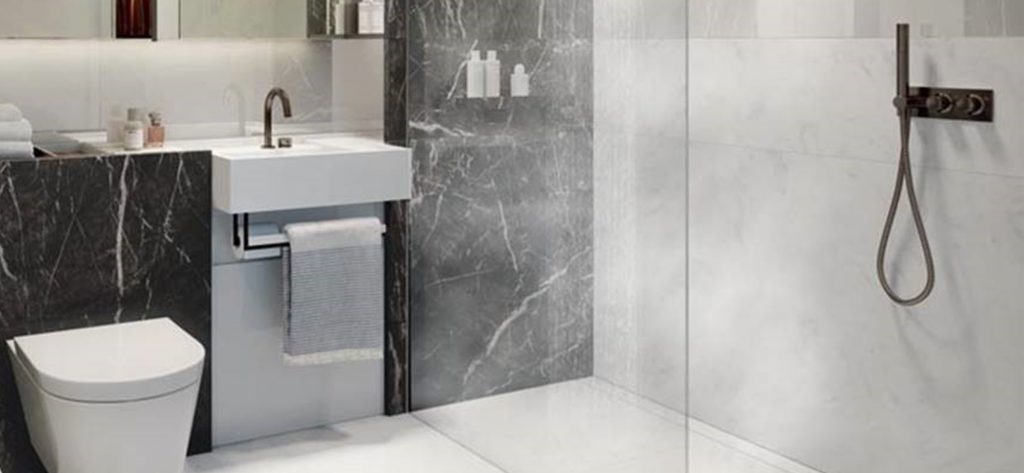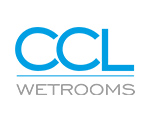
The beauty of a wetroom is that it can be fitted into a surprisingly small area, making it a versatile showering solution when space is at a premium. However, no matter what size of wetroom you are planning, it’s important to consider the issue of splash areas when designing your wetroom.
70% of water used in a shower, falls within 600mm of the shower head
It’s for this reason that you need to take the splash area into consideration. Effective management of your splash area reduces water wastage and prevents your shower from dispersing water all over the bathroom and soaking anything in its way.
Managing Splash Areas
Showers are arguably better for the environment than baths. In fact, this is the reason why some people actively opt for showers and wetrooms over traditional baths. In order to maintain the water efficiency of a shower, clever management of your splash area should be considered. Ideally, you want as much of the water that is being used to go down the drain, rather than splashing up against the walls and waiting to evaporate over time.
Targeted Spray Nozzles
To try to contain the water, you should avoid directing the shower head towards the entry point of the shower especially if you have body jets. Fixed shower heads offer greater control of water direction. To keep the water aimed at the user, consider using targeted spray nozzles. These can be adjusted to spray directly onto the body, making more efficient use of the water. More efficient water use means shorter showering times, which in turn saves more water.
Flooring Gradients
This is a critical aspect of your wetroom and ensuring that you have a sufficient gradient or fall, will stop water pooling and creating a slip hazard or escaping out of the shower area entirely. We recommend a gradient of 12mm from the shower area down to the drain, which will allow all of the water to flow efficiently into the drain.
Adding a glass panel to your shower will also help to keep as much of your splash inside the shower area and save your bathroom furniture or towels from getting wet.
Glass Screens
Easy to clean and tastefully appointed, glass screens provide an elegant solution to splash area management. A glass screen helps contain water, prevent pooling and allows for effective drainage. This allows you to reduce the overall splash area of your wetroom, allowing you to be more efficient with your water.
Flow rates
Thanks to its larger drainage area, a linear drain is adept at handling high flow rates effectively. Ideally, you want all of the water you use to flow into the drain and not pool. The beauty of a linear drain over a traditional square drain, is it’s ability to cope with higher flow rates by the addition of up to three traps. These are positioned along the length of the linear drainage area and are able to cope with high flow rates. See below:-
Flow Rate/Traps Calculation
| No. of traps | Linear Screed Drain | Linear Screed Line | Modular Wet-Floor TR-50 Trap | Modular Wet-Floor Waterless Trap |
|---|---|---|---|---|
| 1 | 29 L/min | 24 L/min | 24 L/min | 29 L/min |
| 2 | 56 L/min | 41 L/min | 41 L/min | 56 L/min |
| 3 | 70 L/min | 68 L/min | 68 L/min | 70 L/min |
Splash Areas in Wetroom Construction
At CCL Wetrooms, we recommend tanking the whole of the shower area as a minimum with Tilesure Waterproofing & Decoupling membrane, to ensure total waterproofing assurance even beyond the splash area.
Considering splash zones as you design your wetroom, will help you to effectively contain excess spray and improve the efficiency of your water usage.
For more tips and advice on wetroom design and tanking, check out our Technical Help section.









